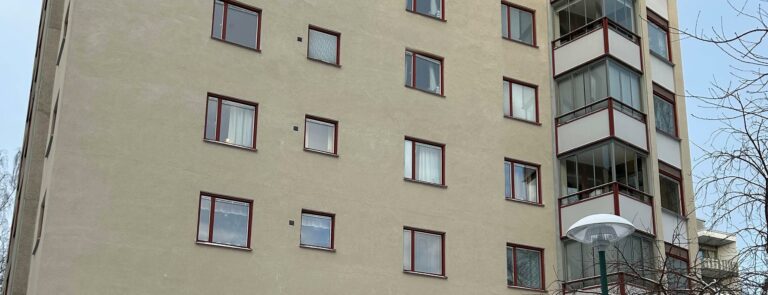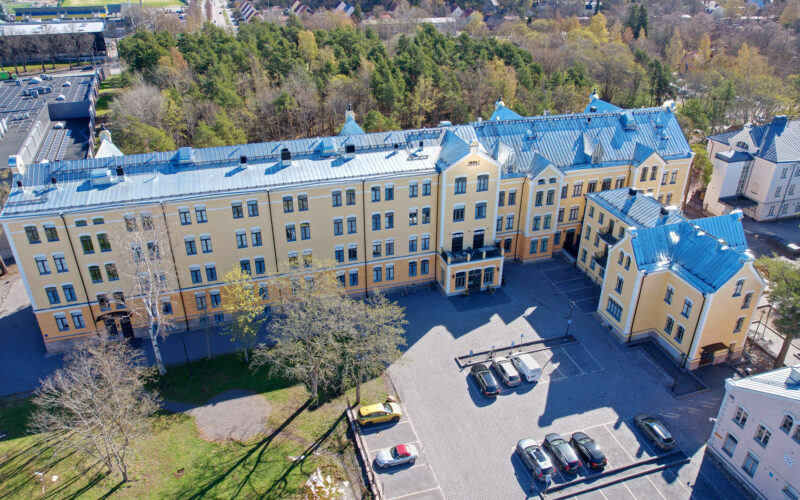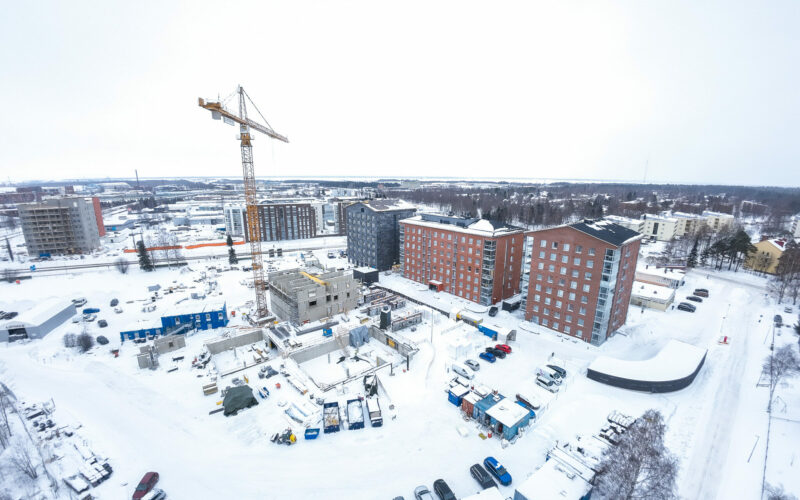Hybrid heating leads to appreciable energy savings in apartmentbuilding in Stockholm
When it was time for a new district heating substation in the Sirapen condominium complex, the board of the association made a thoroughly calculated decision. Rather than simply replacing the old system to ensure operational reliability, they considered how they could make the entire heating system more efficient.
“Heating is the association’s greatest expense,” says Hans Säflund from Brf Sirapen. “We wanted to see what the options were for increasing system efficiency, not only to save money, but also to reduce our climate impact.”
Brf Sirapen consists of three residential buildings and a total of 95 units. Constructed in 1961, the Farsta properties use district heating.
“The district heating substation is in one of the buildings with culverts connecting the other two,” says Säflund. “The culverts are part of the original construction, and though it was not yet critical, the time had come to replace them. It was clear they were leaking heat as seen by the snow over them melting in the dead of winter. The substation was also 25 years old and in need of replacement.”
All three of the Farsta buildings have exhaust fans in the attic. These too were aging. After making their 2019 energy declaration, the association was advised to install an exhaust air heat recovery system.
“When we started investigating the alternatives on the market, we came across the hybrid heating technology developed by HögforsGST,” says Säflund. “Considering we already had district heating and exhaust fans in the buildings, we had a hunch that this technology would work for us. Talking to HögforsGST confirmed this.”
Säflund saw significant money saving opportunities in using the hybrid heating technology.
“In similar properties, hybrid heating had delivered around 40 percent savings in energy. The improved efficiency is due to a reduction in the need for district heating since the system recovers and uses the heat in the ventilation exhaust air.

For Brf Sirapen the timing was perfect. As the association was preparing to renovate the district heating plant, the opportunity to apply for an energy efficiency subsidy from the government for multi-unit residential buildings was still available.
“This generous subsidy covered 50 percent of our entire equipment and installation costs,” says Säflund.
By December 2022, most of the new plant was installed. The heat pump came later, and was running by mid-February 2023. “Our calculations using data from Stockholm Exergi showed a 45.6 percent decrease in our 2023 district heating consumption compared to 2022. We would have seen even greater savings had the heat pump been running throughout 2023. In our comparison, we used normal year-corrected values, which account for differences in temperature, humidity, wind speed, etc. over different periods.”
Since the heat pump runs on electricity, its electricity consumption also factors into the energy savings figure.
“What we get with the hybrid heating technology is a 38 percent total reduction in energy consumption,” says Säflund. “We are extraordinarily happy with this excellent figure, especially considering the heat pump only ran for about ten months in 2023.”
Lower district heating consumption is not the only benefit Brf Sirapen has seen. After installing hybrid heating, the association also receives a recurring bonus for low district heating return temperatures.
“In other, simpler types of heat pump installations, the return temperature is often high enough to result in a penalty,” says Henrik Risberg, hybrid heating manager at HögforsGST. “The sheer size of the penalty fee often consumes the savings otherwise generated by the heat pump.”

In addition to the 38 percent net savings on energy consumption, Brf Sirapen has also seen a reduction in the energy charges the association pays to Stockholm Exergi. Based on how much peak power for heating and domestic hot water the association uses per day, these energy charges account for almost half the cost of the district heating.
“Considering the 60 kW output of the new heat pump, the association can also potentially save on the district heating output cost,” Risberg explains.
Just over a year into making these major efficiency improvements and making the new district heating substation operational, Hans Säflund at Brf Sirapen is very satisfied with the results.
“Our total investment included much more than the new district heating substation from HögforsGST,” he says. “We estimate that we will break even on the substation and exhaust fans in seven to ten years, after which, the association will realize a pure net savings for the remaining 20 or so years of the system. The price tag for the district heating substation includes HögforsGST’s connection to the facility for monitoring and optimizing its function.”






